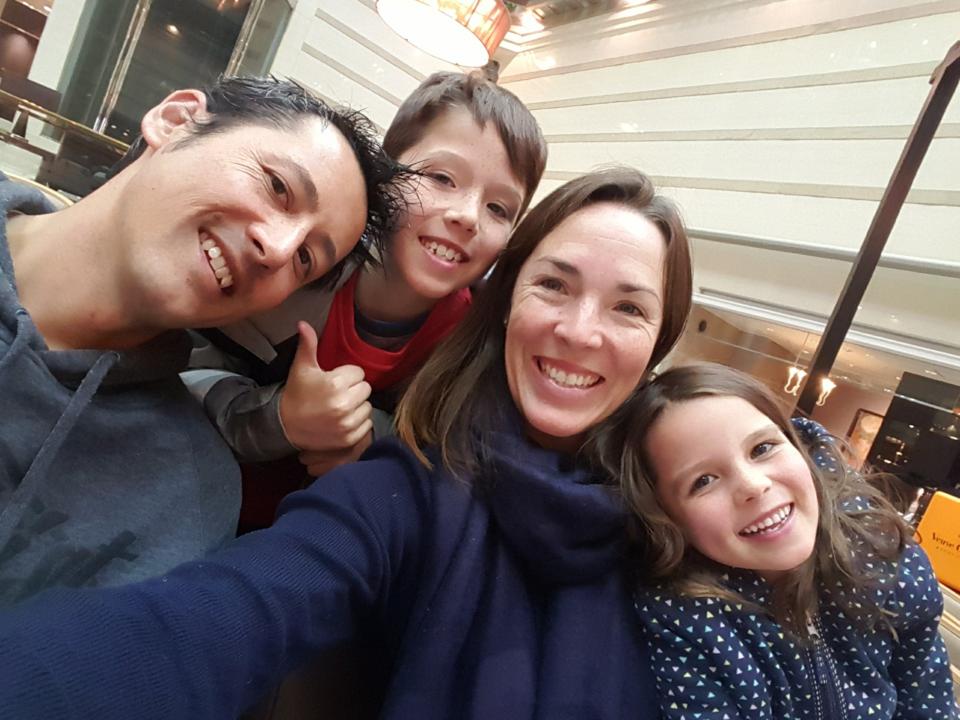The delicious scent of rose wafts into the air as I sit, naked, in an outdoor wooden onsen overlooking a cool tumbling waterfall. A cool breeze swirls steam upwards towards the starry night sky.
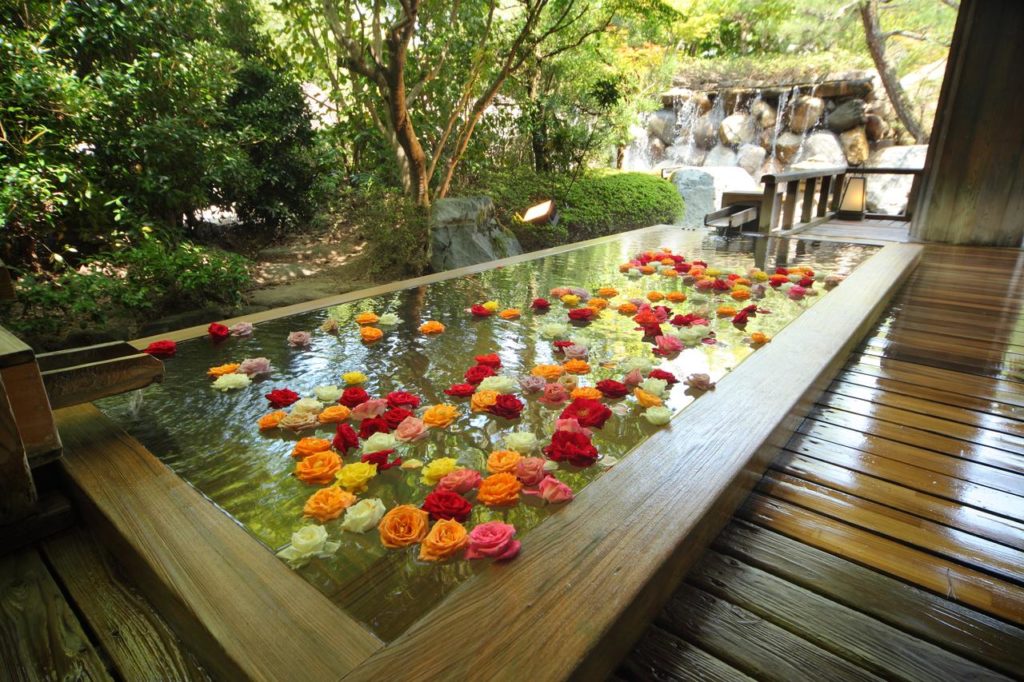
Misasakan Hot Springs hotel in Misassa Japan.
I’m the only one in this secret hot spring bath filled with roses, chrysanthemums and camellia flowers.
I’ve come to spend a night at Misasakan, a traditional ryokan-style hotel in Misasa Hot Springs, Tottori Prefecture, Japan. Misasa is surrounded by forest and a crystal-like river. Famed (in Japan) for radium-rich hot springs, it’s relatively unexplored by westerners. Yet, it’s incredibly close to both Osaka and Hiroshima – two big tourist hot spots.
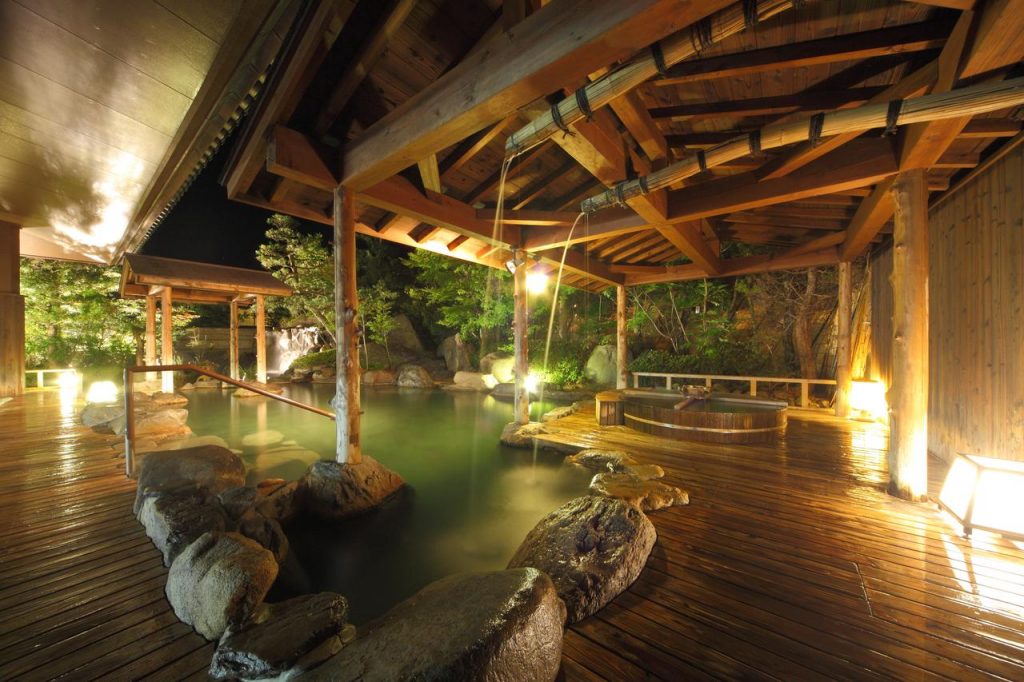
Misasakan hot springs resort
“In Japan, we love hot springs,” my genki Japanese tour guide Kieko tells me.
“When we stay at a hot springs resort, we go to the onsen before dinner, after dinner and before breakfast.”
I’ve followed her directions and the strict onsen rules and now I can feel all the stress melting off my shoulders. No wonder the Japanese love this place.
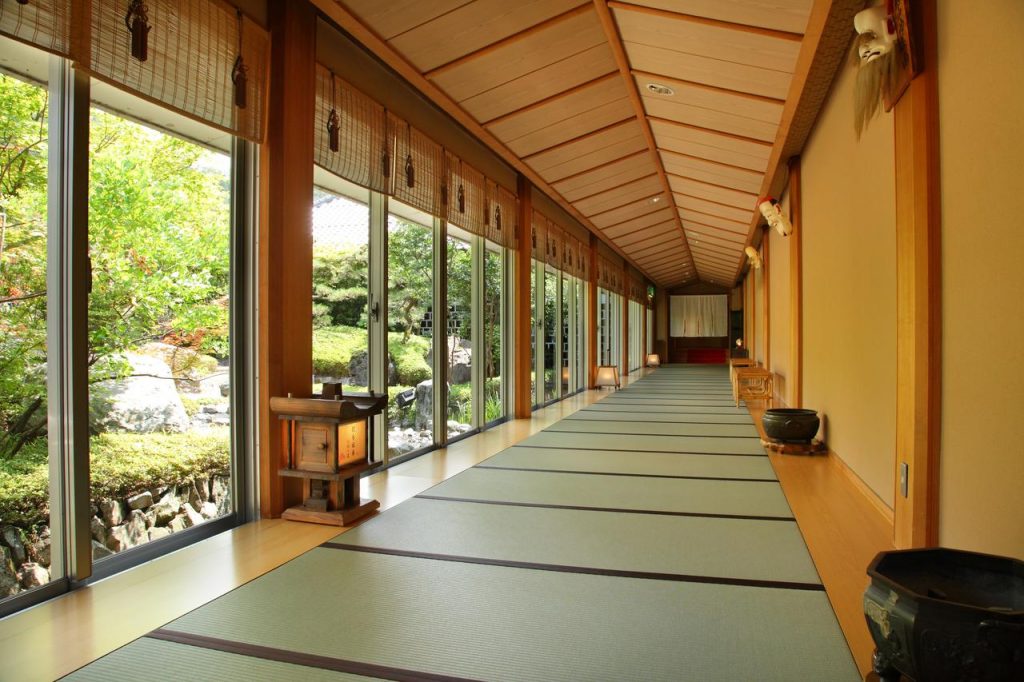
Stay in a traditional ryokan hotel in Misasa
You don’t have to stay at a ryokan to experience the hot springs here. If you’re really bold, you can strip down and enter Kawaraburo, a free outdoor mixed-sex bath with a view of the villagers walking across Misasa Bridge. Misasa also has several hot spring foot baths for travellers to rest their feet. Grab a snack, pull off your shoes and let the kids relax before you start walking again.
Misasa is just one of many delightful Japanese towns I’ve discovered on my way through Western Japan. Towns few westerners visit, but the locals love. I’m travelling from Tokyo to Fukuoka then Yamaguchi, Hiroshima, Shimane, Tottori, Okayama and finally Osaka.
Tottori was the biggest surprise. Who knew that Japan had sand dunes? Sand dunes so large they have an oasis in the middle.
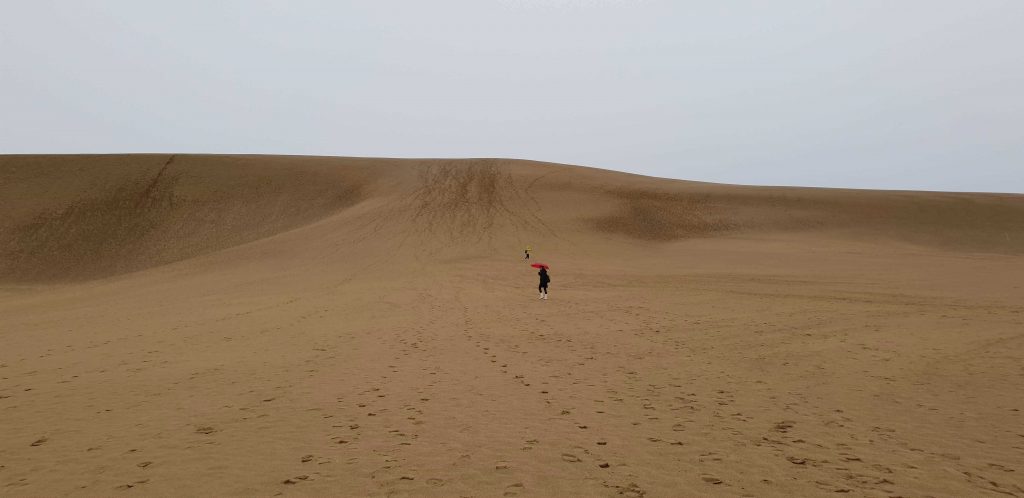
Tottori Sand dunes in Japan.
The dunes are part of the Sanin Kaigan National Park and cover 16 kilometres of coastline along of the Sea of Japan. Each dune is up to two kilometres wide and 50 meters high. Inside the information centre, you can watch a clever wind tunnel experiment which explains how the ripples on sand dunes form.
I arrived at the sand dunes on the one day it decided to rain on my trip. No matter, armed with an umbrella and some rented gumboots, we set off to explore. Once inside the dune system, it’s possible to imagine you’re in the middle of the desert. The oasis in the middle is filled with water and we have to climb and climb to reach the top of the last dune for a breathtaking view of the Sea of Japan.
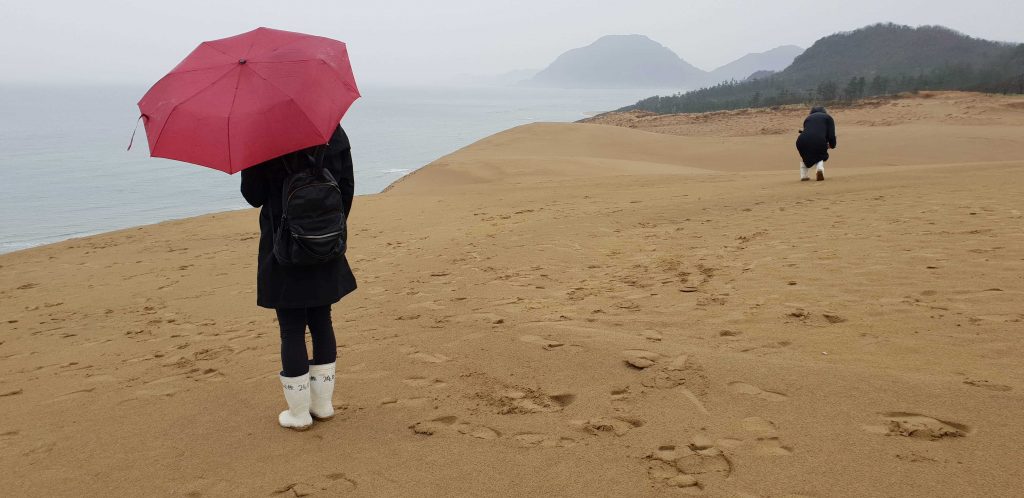
Tottori Sand dunes in Japan.
Like Tattori, few westerners have heard of the Akiyosido limestone cave in Yamaguchi Prefecture. But when I posted a photo of the stunning blue lagoon cave entrance to my Instagram, a Japanese friend wrote back: “OMG, you guys went to Akiyosido! I’ve always wanted to go there.”
About 300 million years ago, the plateau above Akiyosido cave was a coral reef. These days, its lush green plains are dotted with limestone pinnacles, worn by years of rain and wind. You can hike the trails that criss-cross the plains, which are particularly beautiful in Spring and Autumn. If you’re kids like geography, Akiyosido will blow their minds.
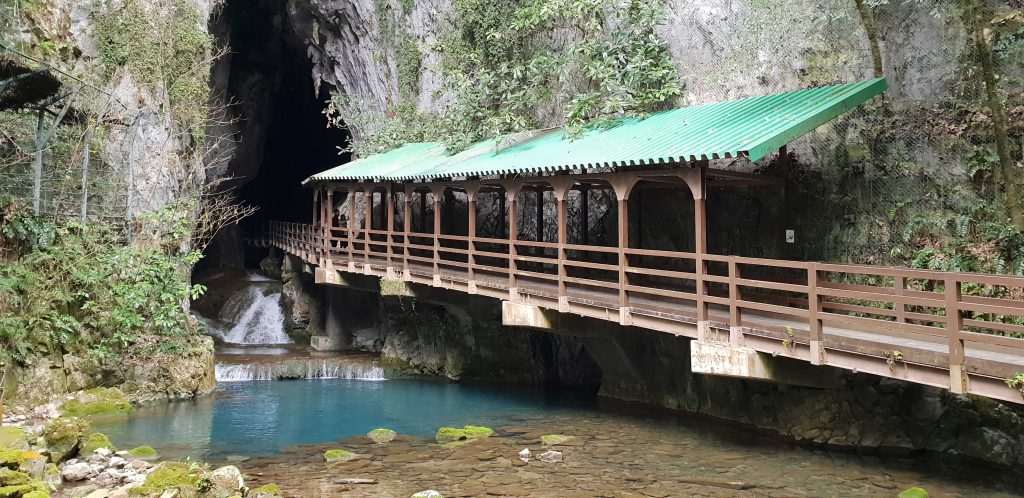
Akiyosido Japan
Akiyosido Cave is the largest and longest limestone cave in Japan. It has terrace pools filled with water, underground waterfalls and limestone formations with “very Japanese” names such as “jellyfish climbing up a wall”. But it’s the cobalt blue waterfall and the covered bridge at the entrance that most people can’t get enough of. It is simply magical.
Not far from Akiyosido you’ll find the village of Iwakuni and the Kintaikyo bridge, a five-arch wooden bridge made famous by hundreds of Japanese artworks.
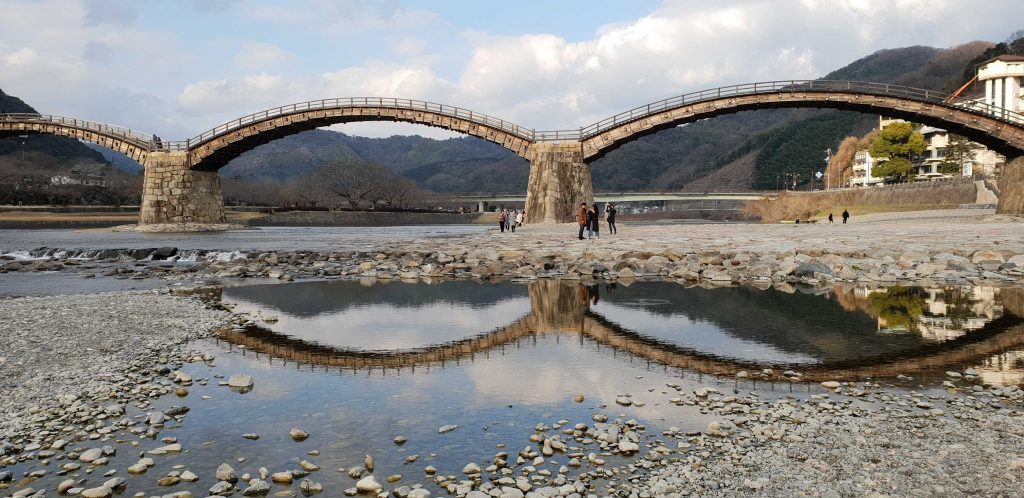
Kintaikyo bridge Japan
Iwakuni sprawls over both banks of the river Nishiki, overlooked by a castle on nearby Mount Yokoyama. Hiroyoshi Kikkawa, the third feudal lord in the area wanted to make a bridge across the river that would never wash away and after meeting a Chinese monk he decided on a design with five-arches. His first attempt washed away due to river bed subsidence in 1673. It was reconstructed after the riverbed had been reinforced and remained invincible against the elements for 276 years until it too was washed away by the floods of Typhoon Kijiya in 1950. The bridge you see today is another reconstruction finished in 2004.
One thing you need to try in Japan is soft-serve ice-cream and Iwakuni has loads of stalls with hundreds of flavours to try including wasabi, garlic and chilli. I settle for a less-ambitious, but still strange coffee-strawberry and am pleasantly surprised by the combination. My biggest tip is to buy a few flavours and share.
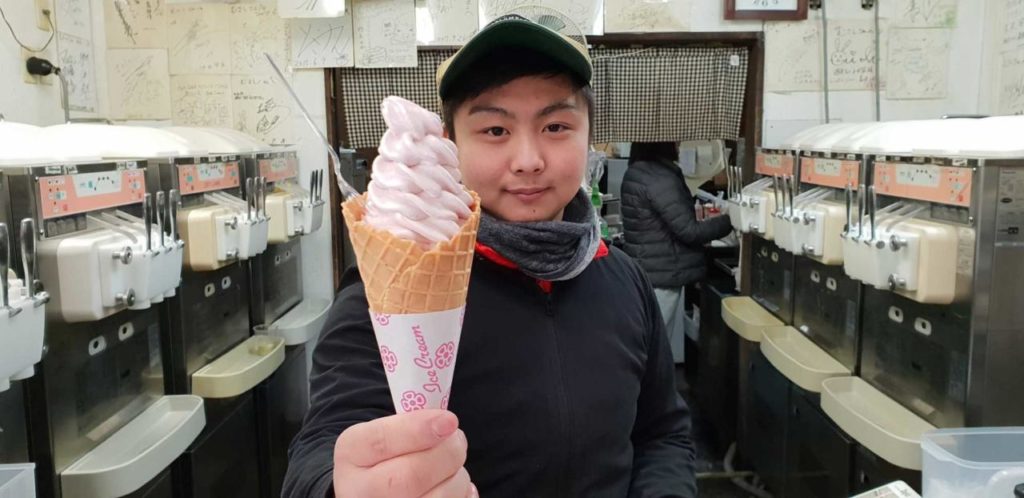
Soft serve ice cream is one of the Japanese foods in Japan you have to try.
Japan is one of the biggest tourist destinations in 2019 with the Rugby World Cup and the Olympics to come. If you want to experience a little more of the Japanese culture, it’s worth finding a few secret destinations while you’re there.
READ MORE:
8 things to do in Osaka Japan with kids
Tokyo Disneyland or DisneySea?
Inside Universal Studios Japan (with video)

